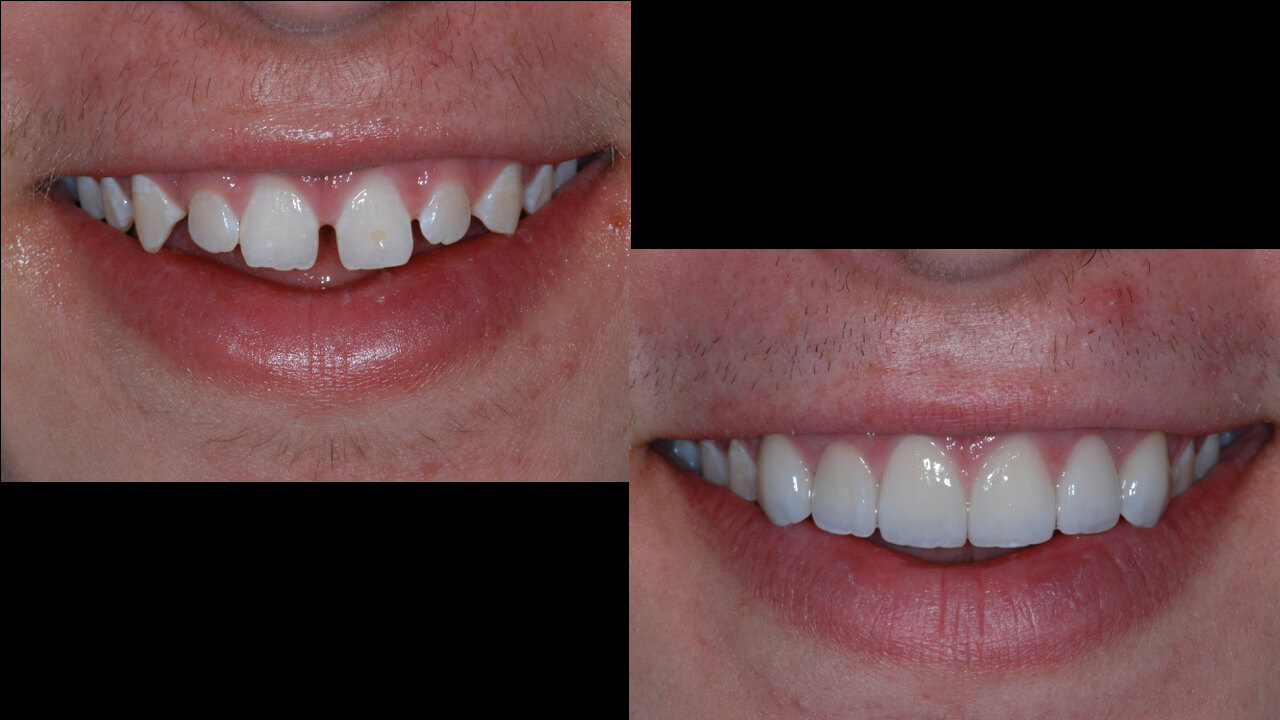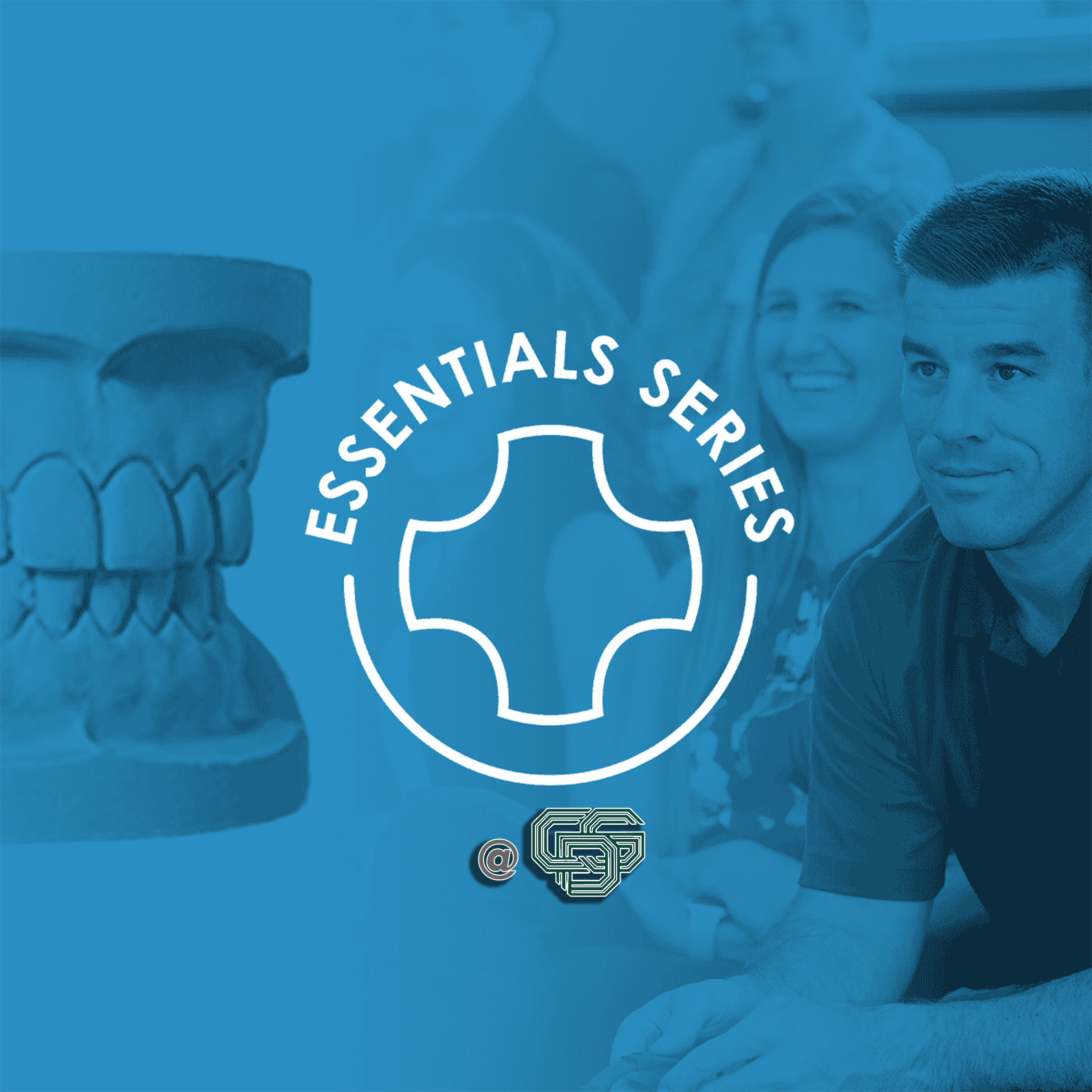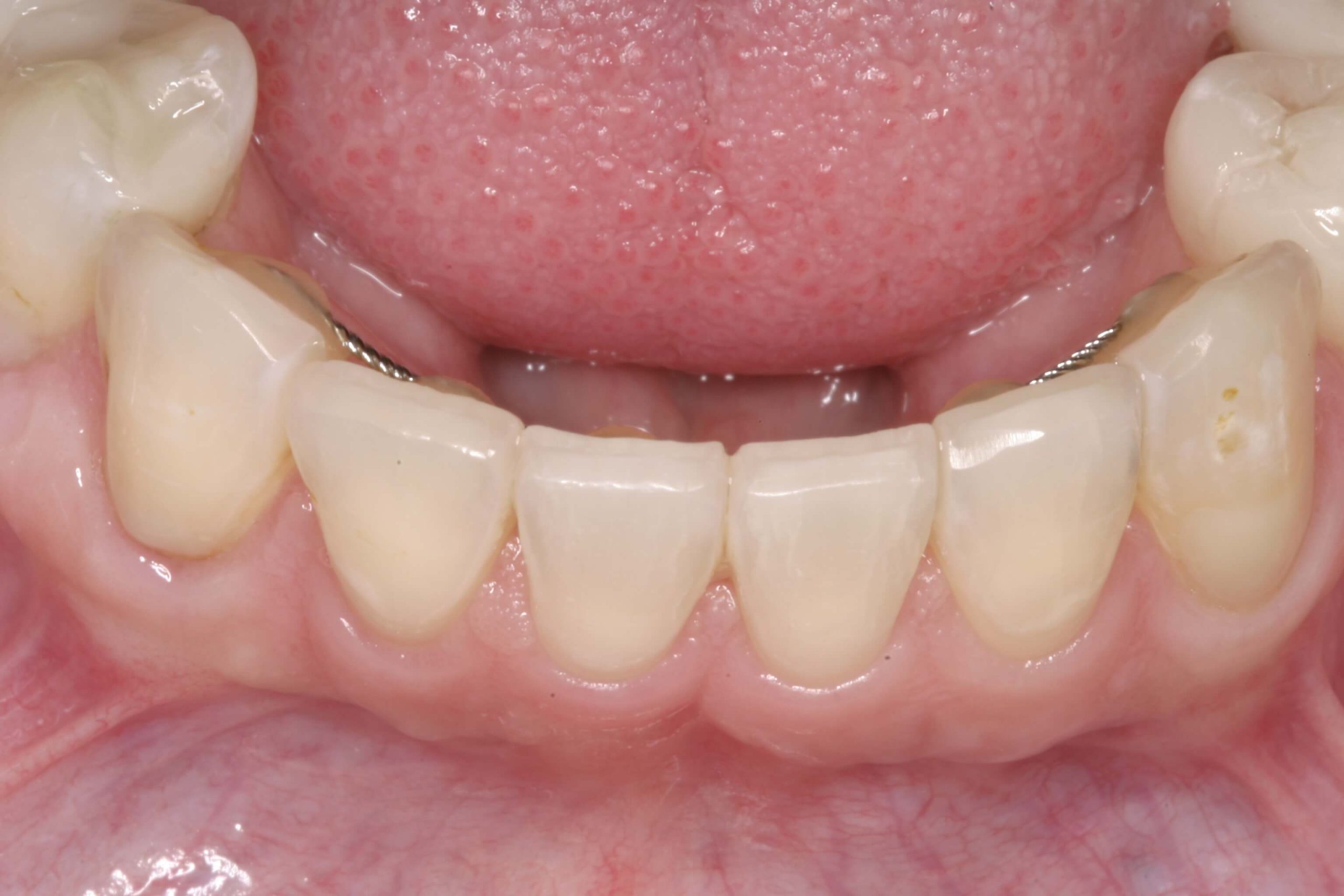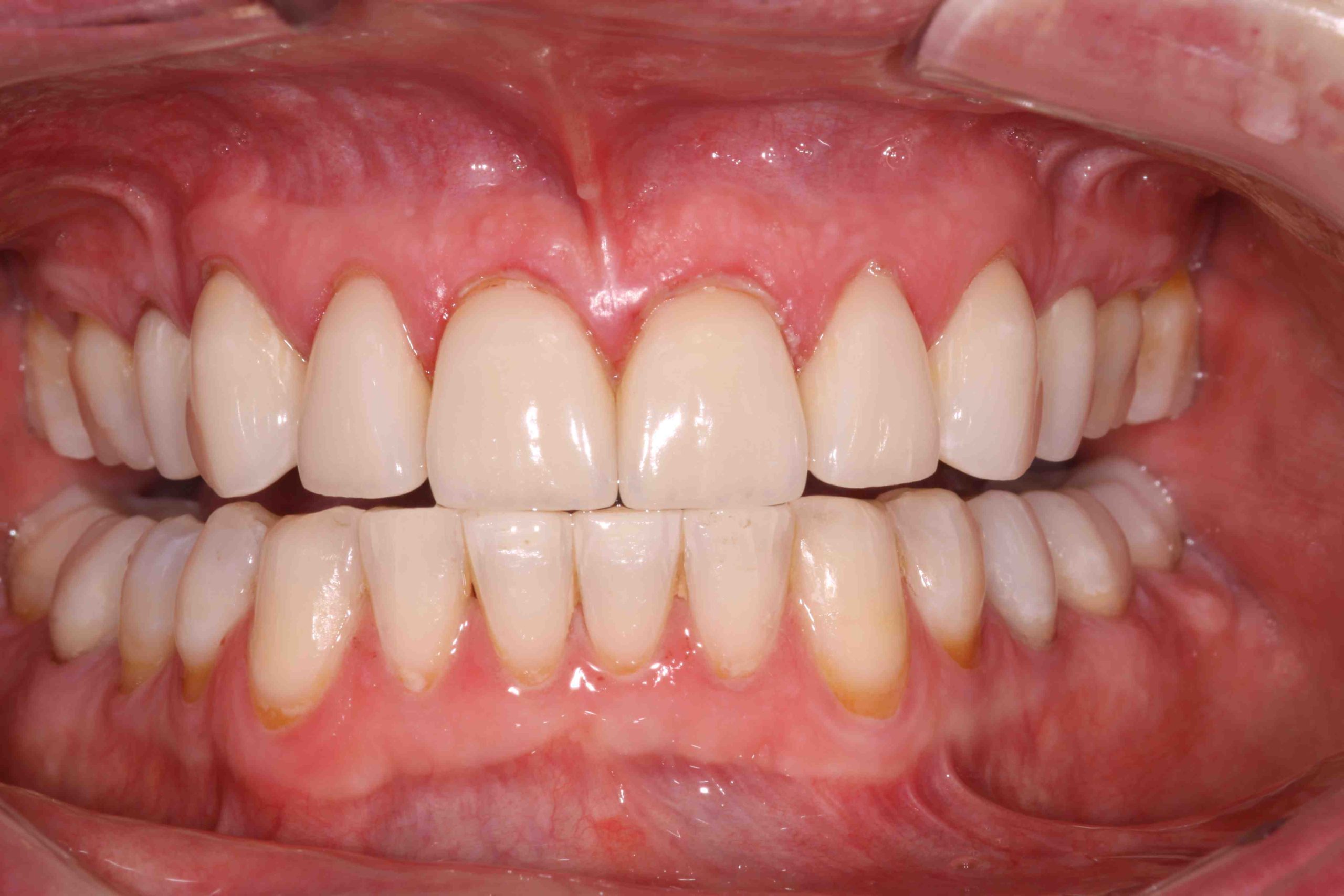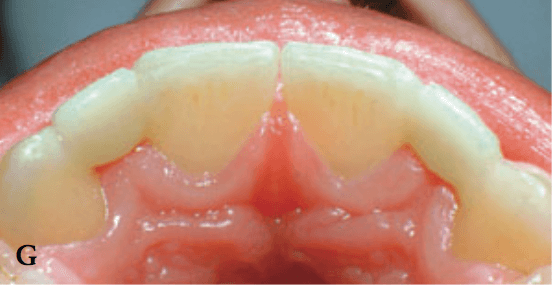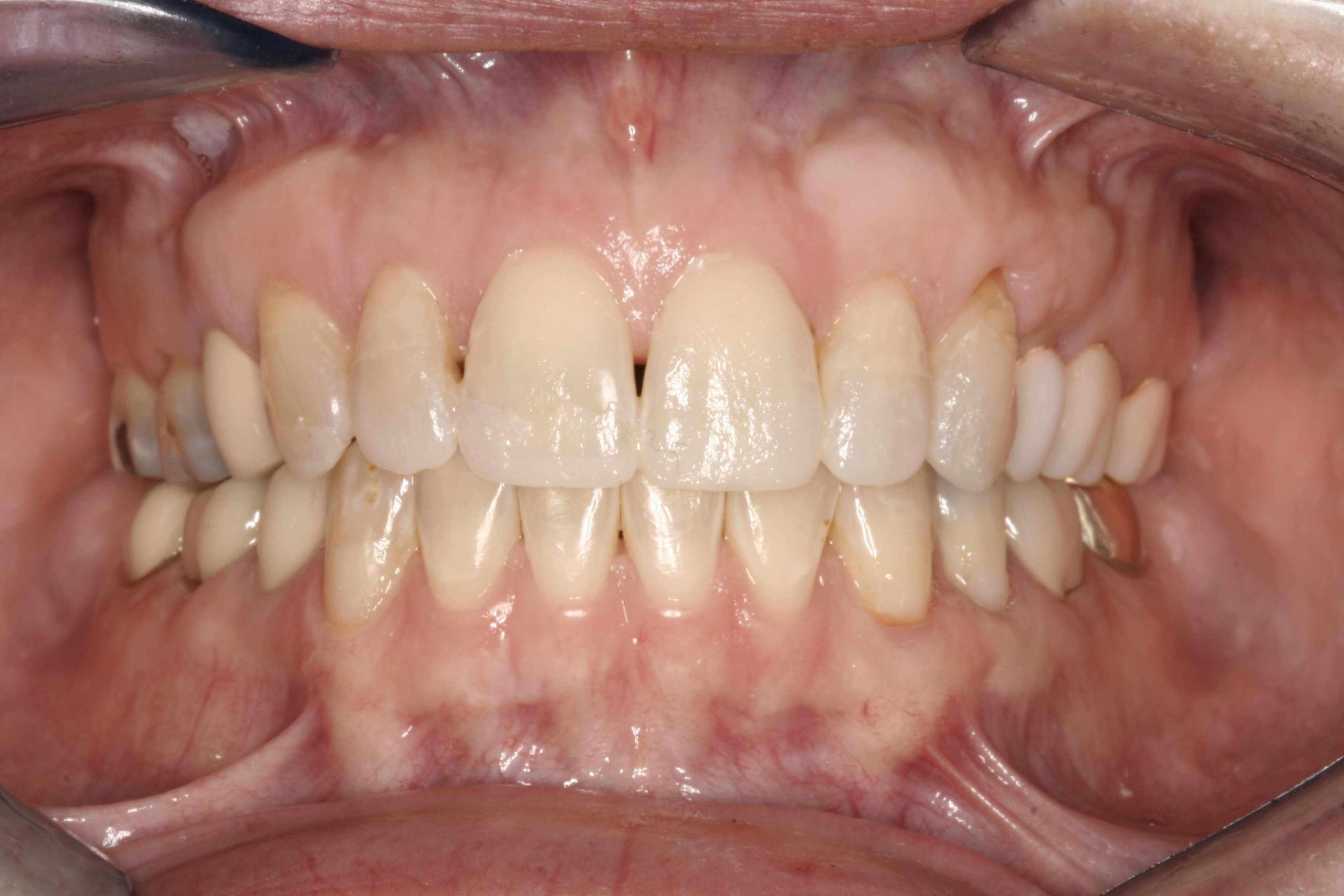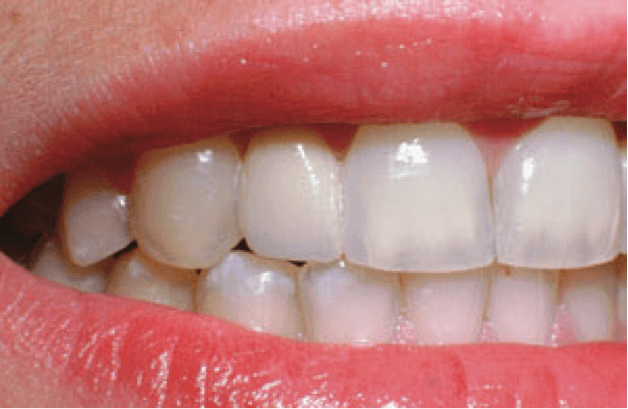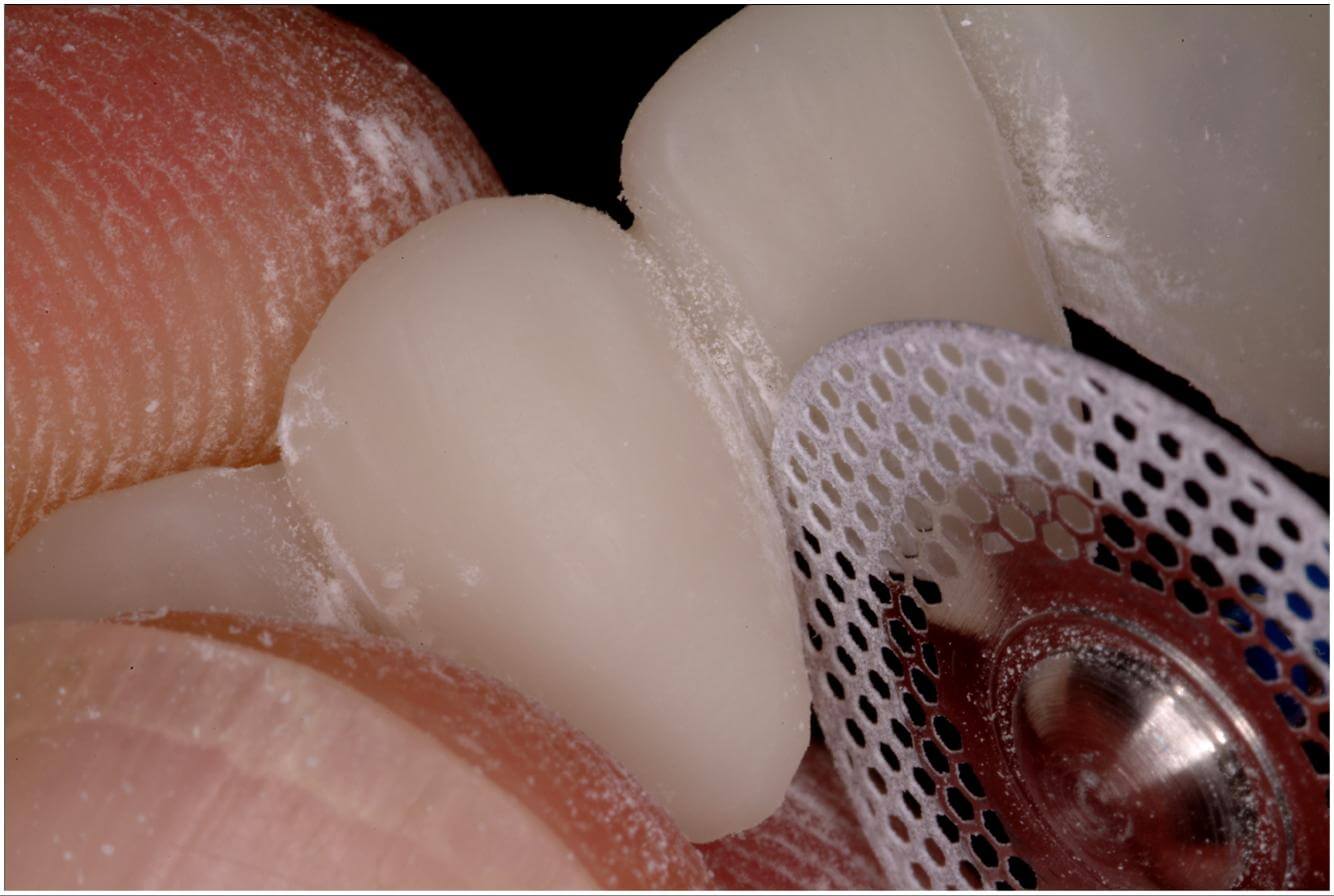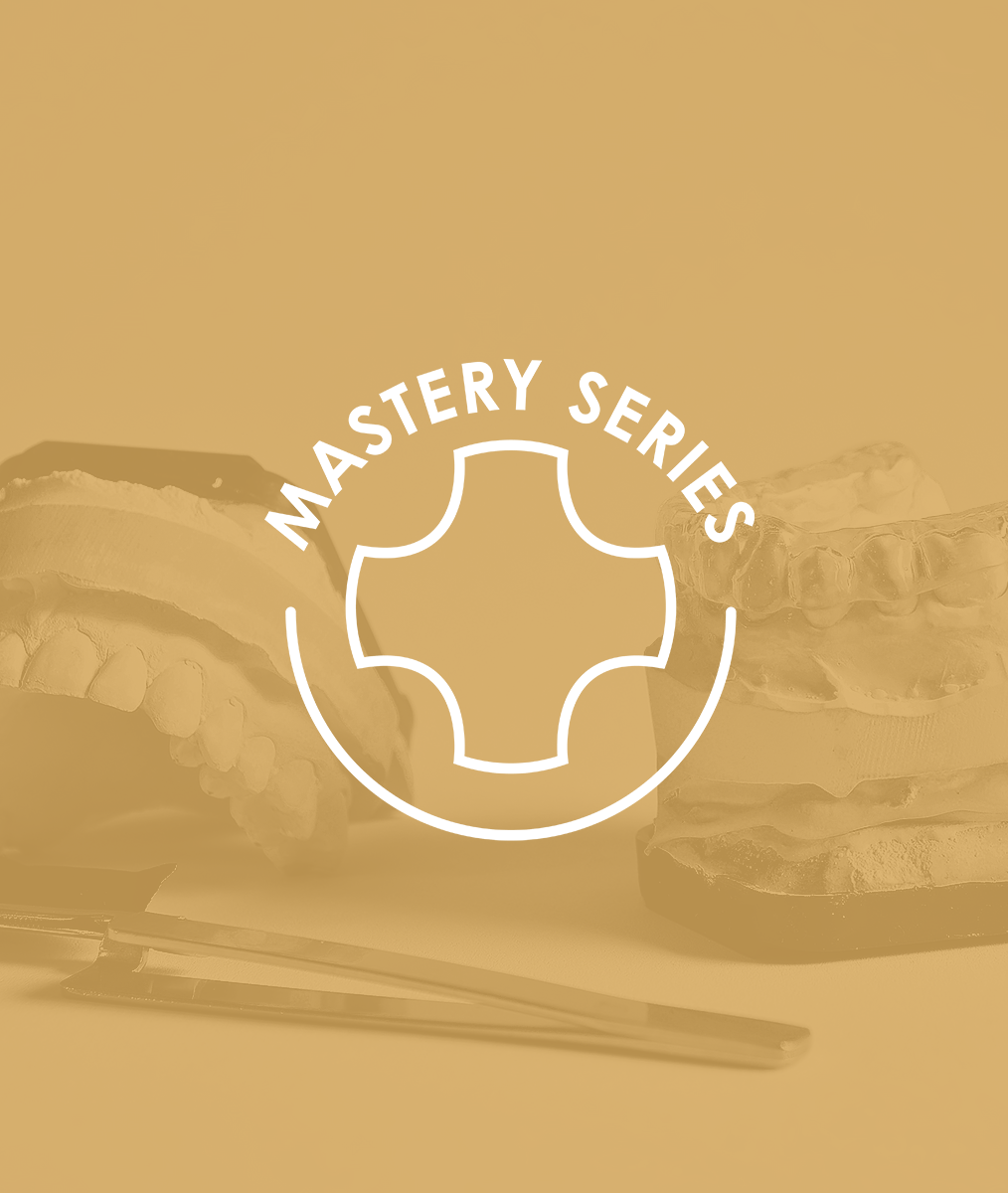Case Report: Ceramic Veneers & Invisalign Part One
Dr. Crete discusses an anterior esthetic case from the initial conversation to finished treatment plan for a patient who lacked smile confidence.
Patient Profile
Drew became a new patient at my practice as a 20-year-old junior in college. His reasoning was: “Just to get my teeth cleaned.” During his initial hygiene appointment, he mentioned the “spot” on his front tooth (#9 – small pit filled with composite 10 years prior).
He asked: “Can you put some new bond on there and make it match better? Even when my dentist did it the first time, it was always obvious.”
I heard his question as a window to ask further questions and find out a little bit more about him. At Pankey, we call this, ‘knowing your patient.’ It can start with an introduction to a new patient during a hygiene examination.
Asking the Right Questions for Case Acceptance
I began by asking, “Do you know why you had the bonding done?” and “Did you have a cavity?”
His answer was, “No, I have been playing hockey since I was really little. I was not always good about wearing my mouth guard and I chipped my teeth a lot.”
Further questioning revealed he was referring to the enhanced mamelons and pitted enamel areas of his anterior teeth as “chips.”
His parents had elected not to have the chips repaired because they were told it was cosmetic treatment and their insurance would likely not pay anything.
The Value of Open Dialogue
I then asked a few more open-ended questions like, “Is there anything about your smile you would change?”
His answer: “Well, I always feel like I have little teeth and it makes me look like a little kid. I wanted braces when I was in junior high but my dentist told me I had a good bite and braces wouldn’t fix all the spaces I have.”
Further dialogue with Drew revealed a significant concern he had about graduating from business school in a year and having to go through interviews looking like a little kid. He said, ”I worry no one will want to hire me because I look so young.”
To be continued…
Related Course
E1: Aesthetic & Functional Treatment Planning
DATE: January 15 2026 @ 8:00 am - January 30 2026 @ 2:30 pmLocation: The Pankey Institute
CE HOURS: 39
Dentist Tuition: $ 6900
Single Occupancy with Ensuite Private Bath (Per Night): $ 355
Transform your experience of practicing dentistry, increase predictability, profitability and fulfillment. The Essentials Series is the Key, and Aesthetic and Functional Treatment Planning is where your journey begins. Following a system of…
Learn More>
